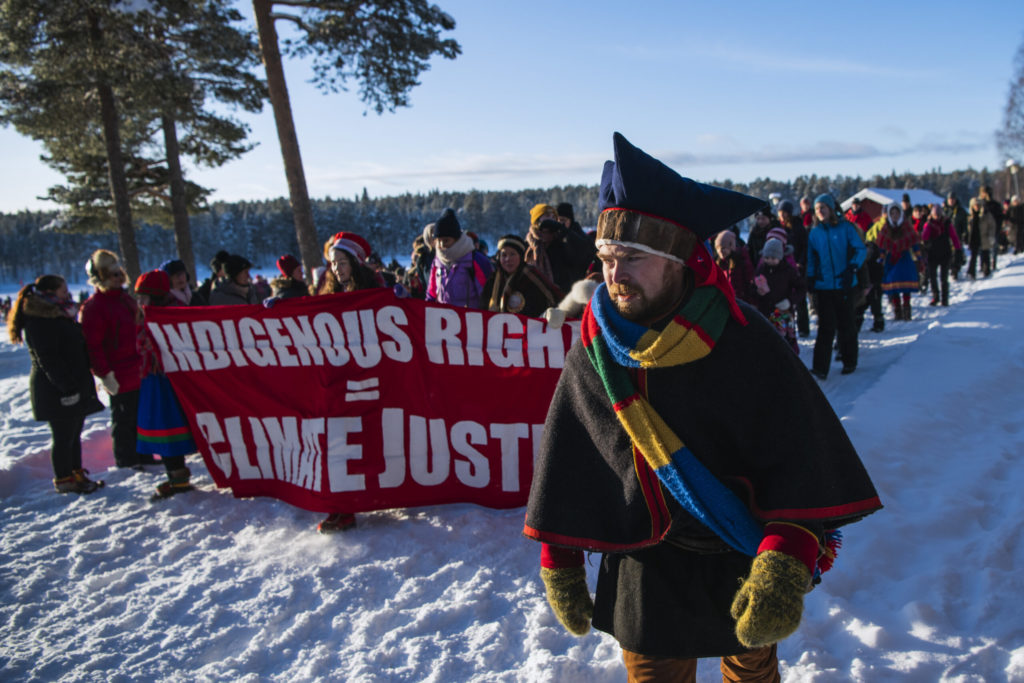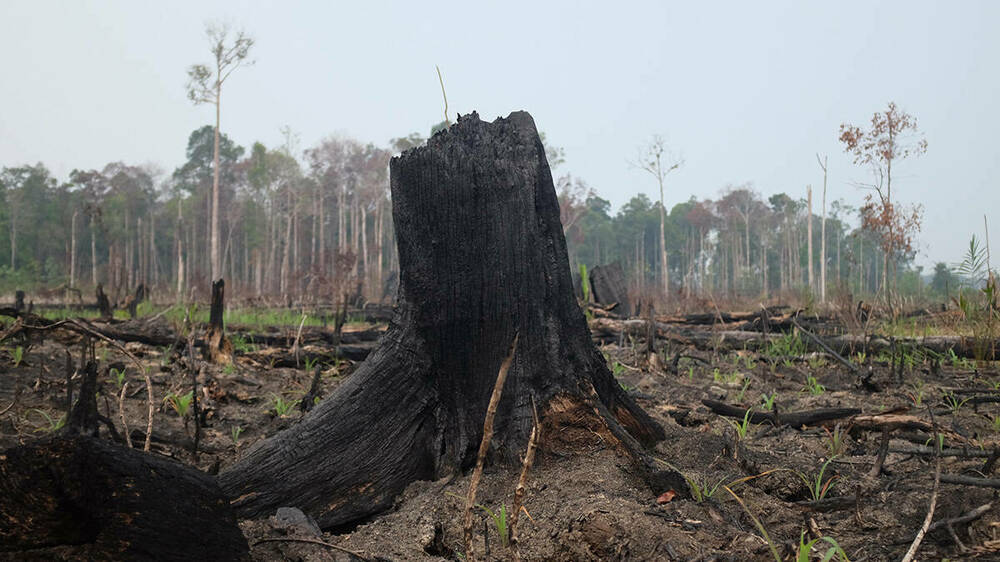More than 40,000 participants, including world leaders and scientists from nearly 200 countries, attended COP26. At least a further 100,000 activists also demonstrated at the event. There is widespread recognition that COP26 was one of the last opportunities to agree to a collective plan to curb climate change.
Limiting global warming
Limiting global warming to below 1.5°C compared with pre-industrial levels was central to COP26. This objective was set in 2015 at COP21 and agreed upon by the 196 signatories.
But, the Intergovernmental Panel on Climate Change (IPCC) estimates that we will exceed 1.5°C of warming in the early 2030s unless we radically change our behaviour. Consequently, the conference could have been significant in preventing environmental and societal catastrophe due to soaring temperatures.
How has climate change affected nature and Indigenous People?
Extracting and burning fossil fuels, cutting down forests and converting land for agriculture has resulted in 1.1°C of global warming since 1850-1900. This has profound effects on nature and the Indigenous People who rely on the natural world for their survival.
Extreme weather events
In 2021 alone, temperatures across the world reached new records. Wildfires and floods broke out everywhere, from Siberia to China. Hundreds of people died from excessive heat in the northwest of the US during summer. Human-caused climate change made this “once in a millennium” event more than 150 times more likely. The IPCC predicts that all extreme weather events will become more frequent and intense as temperatures rise.
Extinctions and biodiversity loss
Climate change and its driving forces are also causing nature to decline at rates that have never been seen before in human history. Up to one million species are under threat of extinction in the coming decades due to human activities. In fact, this is likely to be an underestimation, as only a small proportion of all species have been evaluated for their extinction risk.
Every species that disappears has profound consequences for the remaining plants, animals and birds that interconnect through complex ecosystems. Any human-caused extinction is a tragedy in itself. But, biodiversity loss has grave repercussions for humans, as we rely on healthy ecosystems for many essentials, including clean water and food production.

Indigenous People
The consequences of climate change are even more severe for Indigenous People. They have a greater dependence and a far closer relationship with the environment and its resources than most people do. As a result, all around the world, Indigenous People who contributed the least to global warming are suffering its worst consequences.
Indigenous People are key players in the fight against climate change
But, Indigenous People are not just victims. They, along with traditional local communities, are custodians of the natural world. Therefore, they are crucial to the fight against climate change, and their role in limiting global warming and preserving biodiversity is frequently overlooked. Too often, these communities are portrayed as mere victims and told that they must adapt to climate change. The truth is, they are essential to mitigate against it.
In fact, they have played a critical role in preserving the natural world for centuries. Indeed, their knowledge and practices have been key to the conservation of forests and biodiversity. Therefore, the Local Communities and Indigenous Peoples Platform (LCIPP) was established at COP21 in Paris. This has allowed Indigenous People to participate alongside governments in the UN climate process.
Indigenous People safeguard 80 per cent of the world’s biodiversity, despite representing less than five per cent of the global population. The territories looked after by Indigenous People have lower deforestation rates – especially in Latin America – than other forest areas. For instance, areas of the Brazilian Amazon that are under full ownership by Indigenous People have seen a two-thirds decrease in the rate of deforestation on their land. A COP26 pledge will provide USD $1.7 billion to Indigenous People and local communities in recognition of this.
It is a tragic irony that Indigenous People, who play such a crucial role, are often those who suffer the most due to climate change. They have not been the drivers of global warming by exploiting fossil fuels, nor have they benefited economically from industrialisation and the expansion of agricultural land.
Indigenous People in the Arctic
The Arctic is warming much faster than the rest of the world, and Indigenous People are suffering from its impacts. They generally survive on subsistence-oriented hunting, herding, foraging and fishing. But, the animals they rely on, such as polar bears, walruses, seals and caribou, are disappearing as a result of climate change.
It is also becoming more difficult to travel in this area due to depleting ice and unpredictable weather conditions. These factors are threatening the Inuit communities’ way of life. Food insecurity and the pressure on traditional livelihoods mean that parts of these hardy and adaptable cultures will likely disappear.
Indigenous People in the Amazon
Likewise, Indigenous People in the Amazon rainforest are losing their homeland due to deforestation. Global warming and the deterioration of the forest make droughts and wildfires in this region more common. Late rainfall, intense droughts, dry riverbeds and less food is taking a toll on the rainforest’s inhabitants. Deforestation is also behind 10 per cent of global emissions, according to some estimates.
How did COP26 strive to protect and restore nature and transform our food systems?
COP26 and nature
COP26 had four key goals. Each target involved protecting and restoring nature to some extent. For example, the first goal was to “secure global net zero by mid-century and keep 1.5°C within reach”. Curtailing deforestation is crucial to achieving this.
Deforestation is one of the biggest threats to the natural world. Since 2010, the UN’s Food and Agriculture Organisation estimates that at least 10 million hectares of forest have been razed each year. Some 15 billion trees are cut down annually, resulting in species extinction and biodiversity loss.
What pledges were made at COP26?
The first major deal of COP26 was an agreement to collectively “halt and reverse forest loss and land degradation by 2030“. More than 100 world leaders have promised to stop and reverse the practice by 2030. The signatories include Brazil, whose borders encompass about 60 per cent of the Amazon rainforest.

COP26 and food systems
Food systems were absent from the COP26 goals. Not one day of the two-week COP26 event put food systems at the centre of discussions. This is concerning given that food production is responsible for about 37 per cent of global greenhouse gas emissions. Moreover, only 26 out of 350 of the world’s most influential food and agriculture companies have emissions targets in line with the Paris Agreement.
Other commitments from COP26 will indirectly impact food systems. For instance, the global forest pledge will impact food systems. Agriculture currently drives almost 90 per cent of all deforestation. Clearing forests to make space for farming beef is the leading cause of tropical deforestation. Converting forested land to grow soy to feed cattle is the second biggest driver, and the demand for palm oil comes third. If the signatories are serious about ending deforestation, food systems related to these products will be affected.
Why is this climate change conference key to a more sustainable future for everyone?
COP26 came at the end of the hottest decade on record. Atmospheric levels of CO2 are at their highest level in over four million years. Humans have caused the planet’s average surface temperature to rise by about 1.07°C since the Industrial Revolution. The IPCC predicts that temperatures will continue to increase until at least mid-century under all emissions scenarios.
COP26 was a critical moment for humanity to limit global warming to 1.5°C.
The significance of COP26
Combatting climate change requires a concerted effort from the entire international community. Protecting and enhancing nature is central to preventing further global warming. Some estimates suggest nature-based solutions can provide 30 to 40 per cent of the CO2 mitigation needed by 2030 to limit global warming to 2°C. Indigenous People are key to this. They are the stewards of almost one-fifth of all carbon sequestered in tropical and subtropical forests. Their territories include 40 per cent of the world’s protected areas.
As the source of over one-third of all emissions, global food systems must also change radically over the next decade. Finally, fossil fuel emissions need to massively reduce as soon as possible. Oil, coal and natural gas account for the majority of all emissions. In 2018, they caused around 89 per cent of all CO2 emissions. Clean renewable energy needs to replace these dirty alternatives.
Therefore, COP26 was a watershed moment in the fight against climate change. The commitments made by the attendees can play a vital role in the future of our entire planet.


